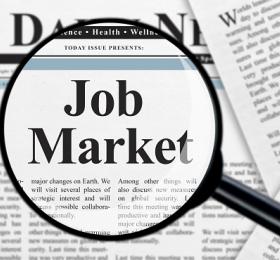
July 15, 2025
“Time is on my side, yes it is.”
-The Rolling Stones
The July deadline for Trump tariffs came and went— we are now waiting for August to arrive. Much has transpired since “Liberation Day,” yet little has changed! So many headlines, so much hyperbole and here we are at the start of earnings season with a resilient economy, a tepid inflationary backdrop, a solid but softening job market, operating margins at highs in corporate America, stocks having regained their footing, and enough political theater to sell out box offices for the foreseeable future. Ironically, there is so much to talk about but so little to discuss, as clarity comes and goes with the click of a button! Let’s start with the domestic economy.
“Liberation Day” appears more like “Negotiation Day” in hindsight. We were not certain that the numbers posted in the Rose Garden on April 2 would come to fruition, and our suspicion has thus far been confirmed. While absurd numbers have been bandied about for the last 90 days and change, the timeline seems to be the most important factor here— threaten and continue the dialogue seems the strategy. As long as lines of communication remain open, the chance of something cataclysmic happening remains low (but certainly NOT zero!). The domestic economy has weathered the storm well in spite of a lackluster Q1 reading on real GDP. To be sure, the import-driven softness of Q1 has given way to a more robust story in Q2. According to the Atlanta Fed, the US economy is tracking for a return to growth— the Bureau of Economic Analysis will post the official Q2 figure in the coming weeks. For our part, we do not expect a US technical recession (back-to-back negative quarterly GDP) in 2025.
What about price pressures and the expected inflationary impact of Trump’s tariff policy? Well, we are still waiting. June headline CPI ran a bit hot at 0.3% MoM, while core ticked up 0.2% over the same timeframe. We only have a couple months of official data since Trump’s April announcement, but the inflationary backdrop remains relatively tame (PPI was even more encouraging). Meanwhile, given the heightened level of uncertainty regarding what the US President may or may not do, many employers have reduced hiring activity to a more moderate pace. The official US unemployment rate came in at 4.1% in June, so for the time being we still have a healthy labor market all things considered. However, trade disruptions can have jarring economic impacts. So, we will need to see what the US administration actually does before assessing the impact—the range of potential outcomes is particularly wide at this time and that tends to portend volatility.
After Trump’s original tariff announcement, corporate America did more than its share of wailing and gnashing of teeth. However, Q1 earnings indicated American businesses were well positioned prior to Liberation Day, and we expect more of the same as we parse corporate results for Q2. Unlike many of our peers, we were not quick to throw in the towel on US equities or the US economy post-Liberation Day. On the contrary, we used the volatility to tactically buy stocks toward the end of April. We have since unwound those tactical positions in favor of waiting for better risk-adjusted opportunities as we continue to navigate an environment fraught with headline risks. Our S&P 500 earnings expectations for 2025 came down a bit during Q2, but entering the back half of ’25, we still see significant YoY growth as a highly likely outcome. TWP’s expectations for valuations are largely unchanged since the beginning of the year given the economic backdrop and our expectations for rates (Hint: we are still in the camp of higher for longer on the backend of the curve, BUT a new Fed chair is looming on the horizon). So, we are slightly trimming our S&P 500 yearend target to 6700 from 6800.
Now for the fun stuff (#sarcasm)… The world is a mess—trade wars and “hot wars” dominate the news cycle. We see a real risk that Mr. Trump strikes out in his attempt to break the “axis of evil”—Russia, China, Iran, and North Korea. In March the President promised Mr. Putin that there would be business opportunities for Russians if hostilities ceased in Ukraine; it was a nonstarter. Ramping up tariffs on China in April did little but spark a brief embargo between the world’s largest economies. Bombing Iran in June produced an uneasy (and perhaps untenable) truce between Jerusalem and Tehran. The “Big Beautiful Bill” passed Congress, increasing the deficit and adding more downward pressure to the US dollar (the greenback has lost ~8% of its value on a trade-weighted basis YTD). An uneasy calm has quietly crept across financial markets, and with a bombastic President at the helm in the midst of choppy waters we see that as a reason for caution at this time. The clock is ticking for Mr. Trump—midterms are less than a year and a half away. He needs to show tangible progress toward his lofty goals (both foreign and domestic) should Capitol Hill remain red. So far there is plenty to talk about but little to discuss.